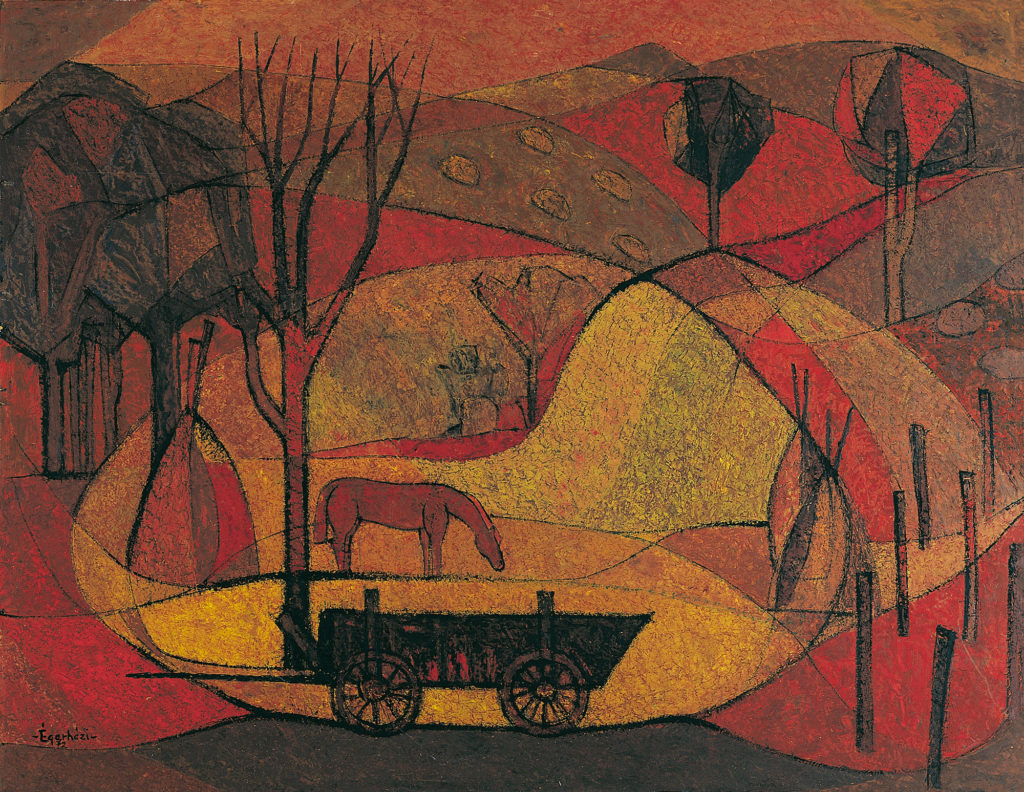Autumn Atmosphere
oil, board, 95×122 cm
1972
Autumn Atmosphere
Imre Égerházi comes from Transylvanian descent, his ancestors include János Egerházi Képíró, who was re-honored by György I. Rákóczi, Prince of Transylvania, as the merit of his fresco painting works. Among the arts of János Képíró Egerházi, the coffered wooden ceiling of the Reformed Church in Gyulakuta can still be seen today.
Imre Égerházi first visited Transylvania in 1956, through his family contacts. The Transylvanian landscape and the people of Transylvania, their difficult fate, inspired him so much that he returned every year and visited all parts of Transylvania. From the beginning of the 1970s, he crossed the Romanian-Hungarian border several times a year. He mainly visited the Satu Mare region, the area of Târgu Mureş, the Gheorgheni Basin and the Gyimes Mountains.
The beginning of the 70s was decisive in terms of visits, because with their artist and filmmaker friends they tried to take part in the enlivening events of the Hungarians oppressed during the communist dictatorship. Of these, stands out the first Hungarian Csángó festival in 1973 in Gyimesközéplok. In 1971 and 1972, we can mainly highlight plein air paintings, which meant that, equipped with an easel and fiberboard, while mingling with the locals, standing in the outdoors, he created quite a few defining works when it comes to Transylvania.
He painted Autumn Atmosphere in 1972 based on his sketches made at the Artists’ Colony in Hajdúböszörmény, Gyimes. Looking at his picturesque eras, the early 70s were dominated by black contours and the color blue. However, in the case of Autumn Atmosphere, the reddish and ocher colors, typical of the titular season, dominate.
This artwork was also appreciated in professional circles and Imre Égerházi also considered it a milestone in his artistic development. This work played a major role in receiving the Káplár Miklós Prize in 1974.
The painting can be seen in the Imre Égerházi Memorial House, owned by Hajdúhadház.


